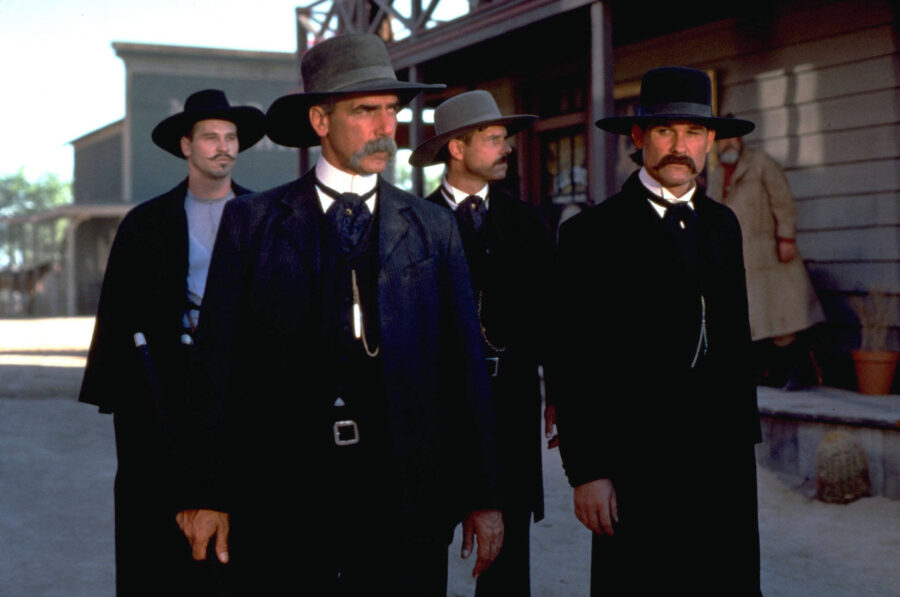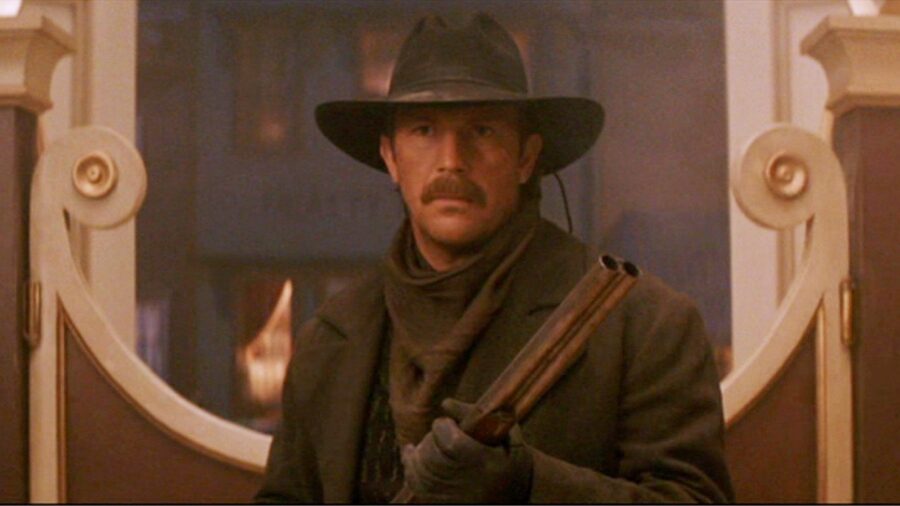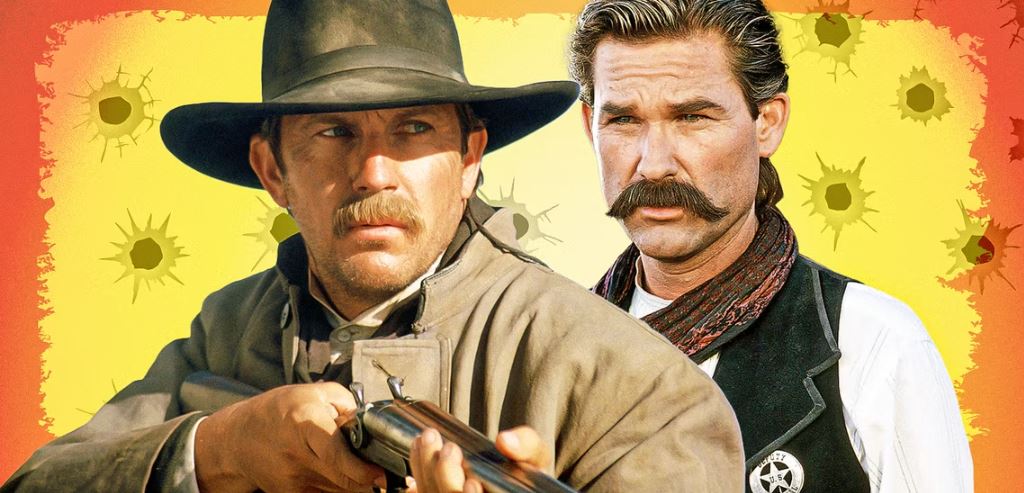Sometimes there is a certain synchronicity that leads to two movies based on the same premise being released in quick succession. One such occasion involved two westerns about Wyatt Earp and the gunfight at the O.K. Corral that were released just six months apart — Tombstone and Wyatt Earp. The tale is well-worn ground, but the story behind the productions is perhaps more interesting. Kevin Costner was offered the lead role in Tombstone but already had plans to make a miniseries about the Old West lawman, which would eventually become Wyatt Earp. What followed included Costner attempting to blacklist Tombstone, fights over period-appropriate clothing, and maybe even a ghost director.
Competing Movies With Similar Plots Are Surprisingly Common

It is hard to say exactly why multiple versions of the same movie crop up from time to time, particularly as studios tend to avoid the possibility if they can. In fact, just a year before Tombstone went into production, Kevin Jarre, who wrote the script and was set to direct the film, had his Dracula script canned by Universal after Francis Ford Coppola announced his own version.
Despite this, there have been a lot of high-profile instances, such as Armageddon and Deep Impact, Dante’s Peak and Volcano, and Olympus Has Fallen and White House Down. What is clear when looking at the history of these movies is that it is rare for both to be successful — whether looking at box office, critical response, or cultural impact, one generally outperforms the other. This holds true for Wyatt Earp and Tombstone, with the latter being far more well-received critically, making more money on a smaller budget, and having a much stronger reputation among audiences.
How Did Two Wyatt Earp Movies Get Made at the Same Time?

The short answer: Kevin Costner. Before Wyatt Earp went into production, Costner was offered the lead role in Tombstone but declined to instead develop a miniseries about Earp. As reported by Entertainment Weekly in 1993, the fallout of this decision led to a lot of drama. Coming off the immense disappointment of having his Dracula script shelved, the announcement that a rival Wyatt Earp film was on its way was a blow to Jarre, who said it was “an attempt to crush my picture.”
In the early ’90s there were few stars with as much juice as Costner, coming off several hits and having won two Oscars for his previous Western Dances with Wolves, so when he and his agency CAA started throwing their weight around, the survival of Tombstone felt precarious. Tombstone producer James Jacks told Entertainment Weekly that CAA was telling people in the business that the film was dead, while Wyatt Earp producer Jim Wilson said: “Because of the asinine mentality in this town, they won’t let two pictures about Earp go forward. If I were a gambling man, I’d bet Tombstone doesn’t go ahead.”
Things changed when Kurt Russell, himself a CAA client at the time, came on board. Having a star of his caliber as the lead got things rolling again, though it didn’t stop the drama. Unfortunately for Jarre, the film’s backers simply didn’t think he was up to the task, and he quickly lost support as director before being fired from the project after less than a month. According to Russell himself in an interview with True West magazine in 2006, he took over directing in all but name.
Russell said: “They wanted me to take over the movie. I said, ‘I’ll do it, but I don’t want to put my name on it. I don’t want to be the guy.’” The compromise: hire George P. Cosmatos as a ghost director. The Rambo: First Blood Part II and Cobra director was suggested by Sylvester Stallone (the movie also features his brother, Frank Stallone). Russell added: “I said to George, ‘While you’re alive George, I won’t say a goddamn thing.’” Val Kilmer, who steals the show as Doc Holliday, backed much of Russell’s version of events in a blog post, detailing the work he did putting together shot lists for Cosmatos.
Once the productions were underway, much of which took place concurrently, authentic outfits became an issue. According to True West, Costner had managed to commandeer every Western costume in Hollywood. Russell, however, was unfazed: “It forced us to go to Europe, which, in fact, is where the nouveau riche of Tombstone bought their clothes in the first place.” When it came to Wyatt Earp, most of the issues came with what ended up onscreen rather than the process of making it.
The three-plus-hour epic bombed at the box office, bringing in just $25 million domestically on a $63 million budget and being nominated for five Razzies (the nomination for Worst Screen Combo going to Kevin Costner and “any of his three wives” is easily the highlight). Even the cast was less than pleased with the result, though none as vocally as Michael Madsen, who played Virgil Earp. In 2017, he told Empire: “It’s long, it’s stupid and boring. It’s a giant close-up of Kevin for three fucking hours.”
The History of Wyatt Earp on Film

When Tombstone was released at the end of 1993, there had already been a wide range of movies based on the story of Earp and the gunfight at the O.K. Corral. The first time he appeared in a movie was in the 1923 film Wild Bill Hickok, but the most famous versions of his story are in John Ford’s My Darling Clementine and John Sturges’s Gunfight at the O.K. Corral.
By the time the competing films were made it had been more than 20 years since there was a movie depicting the story, though even 1971’s Doc recontextualizes the story to center on Doc Holliday (Stacy Keach), so it was fair to assume audiences would be interested in a new take. Unfortunately for Costner, 190 minutes of Earp’s life from child to alcoholic widower to brutal lawman to an old man on a ferry just didn’t hit the mark. A bloody and well-mustachioed version with humor and wit, on the other hand, was much more effective. It doesn’t hurt that Tombstone has the better O.K. Corral shootout.
Characterization Differences Between ‘Wyatt Earp’ and ‘Tombstone’

Aside from the far different focus of the films, Wyatt Earp having a larger scope and Tombstone being more focused, the portrayals of the characters are the largest divergence. Costner’s version of Earp ranges from a naive kid to a force of seething aggression, with a decent chunk of a scoundrel in the middle. It’s actually quite laudable that Costner and director Lawrence Kasdan looked beyond Earp’s sizable self-promotion to present a character with obvious flaws, even if it isn’t the most nuanced portrayal. Russell’s Earp has much more going on below the surface, presenting a steely resolve but constantly unsure of his own nature.
The clear separation, however, is Kilmer’s version of Doc Holliday. Quite comfortably one of his finest performances, Kilmer looks effortless even while pallid and covered in sweat, to the point you could believe he really had tuberculosis. Every interaction with Johnny Ringo (Michael Biehn) is full of tension, yet Kilmer brings charisma and a winking confidence, all while being comedic relief without undermining the drama. It’s wildly impressive. While Dennis Quaid is a fine actor, his version of the character suffers greatly from the proximity to Kilmer’s. It’s similar to watching Brian Cox as Hannibal Lecter in Manhunter after already seeing Anthony Hopkins in The Silence of the Lambs – one version is so iconic that anything else seems like cosplay. In many ways it encapsulates the battle between the films, with the messier rendering turning out far better.
